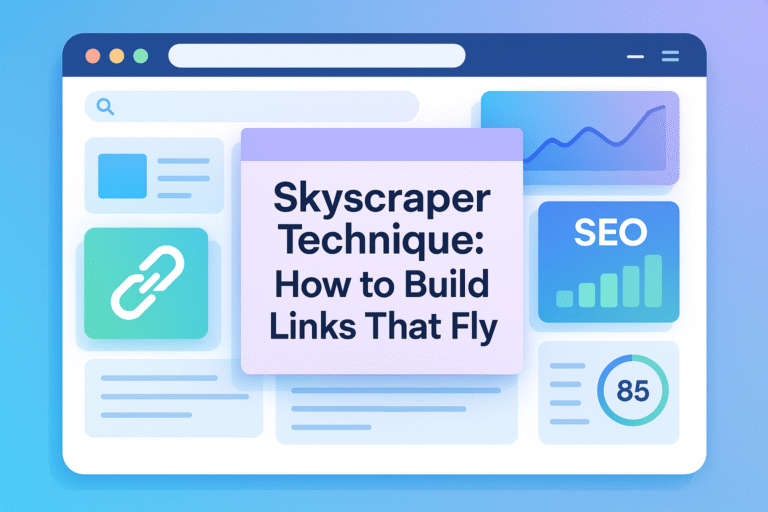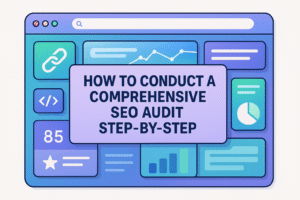In the ever-evolving landscape of digital marketing, broken link building emerges as a highly strategic, yet often overlooked, approach to amplifying online impact. This method centers on identifying and replacing non-functional links on websites to transform potential setbacks into opportunities for enhanced visibility and engagement. Mastering the nuances of why broken links occur and differentiating their types empowers professionals to leverage this strategy, not only improving SEO but seizing overlooked chances that competitors miss.
The strength of broken link building is undeniable, as it refines website architecture, enhancing user experience and elevating search engine rankings. Equipped with the right tools and criteria, pinpointing target websites and dissecting broken pages becomes efficient. This structured approach lays a solid foundation for developing top-tier replacement content, which is crucial for success. Prioritizing relevance and quality enables content creators to forge productive partnerships with site owners, driving mutually advantageous collaborations.
This article offers a definitive guide from foundational understanding to executing advanced broken link building tactics. It delves into core strategies like personalized outreach, relationship cultivation, and integrating recommended SEO tools. Whether you’re new to the field or an experienced professional, this framework provides a decisive path to optimizing your broken link building strategy, ensuring ongoing advancement and enduring success in digital marketing efforts.
Understanding Broken Links
Broken links are significant pitfalls in the digital landscape, primarily because they disrupt the user experience and can adversely affect SEO performance. Such links usually lead users to error pages instead of the content they expect, diminishing the quality of your website. Search engines penalize sites with numerous broken links, seeing them as less reliable, which affects your site’s credibility and domain authority. However, these broken links also offer valuable broken link building opportunities, allowing website owners to replace non-functional links with their own high-quality backlinks. This strategy not only enhances the user experience by providing fresh and relevant content but also strengthens backlink profiles, contributing positively to SEO efforts.
Definition and Types of Broken Links
A broken link is essentially a hyperlink that fails to lead users to the intended webpage, instead presenting an error message. This typically happens when the original URL is deleted, moved, or altered, resulting in a link that no longer points to a valid destination. The most common error messages seen with broken links include the 404 Page Not Found and the 410 Gone errors. Such links can arise from various scenarios: deleted blog posts, migration of web pages, or even entire sites disappearing. In the realm of SEO, broken links are detrimental since they point to now non-existent destinations, negatively impacting user experience and site authority.
Why Broken Links Occur
Broken links can emerge due to multiple reasons, often tied to changes or errors in how web content is managed. One frequent cause is when a destination website permanently moves or shuts down without implementing proper redirects. This results in links that previously directed users to specific content now leading nowhere. Firewalls and login requirements can unexpectedly block access, transforming a link into a dead end.
Alterations in the URL structure of the linked page, if not handled with redirects, also contribute to broken links. Finally, incorrect initial setup of a link—perhaps a typo in the URL—means the link was never functional and remains broken unless corrected. Understanding these causes helps in crafting a robust broken link building strategy.
Benefits of Broken Link Building
Broken link building can be a game-changer for websites seeking to elevate their SEO performance authentically and effectively. By transforming dead links into active, high-quality backlinks pointing to your site, this tactic enhances your backlink profile with invaluable high-authority backlinks. This process not only boost your site’s authority but also improves your overall SEO performance.
Establishing such connections is beneficial not only for the technical optimization of a website but also fosters stronger relationships within the industry, as fixing broken links provides genuine value to other webmasters. Furthermore, this method supports sustainable traffic growth by helping users find the most relevant, functional content, ensuring an improved user experience. Embracing broken link building can often give you a competitive edge by inheriting authority from previously valued pages.
SEO Enhancement
Broken link building is a proven SEO technique that focuses on identifying and replacing broken hyperlinks on external websites with your relevant content, gaining high-quality backlinks in the process. The use of SEO tools such as Ahrefs and Screaming Frog SEO Spider is essential for efficiently detecting and addressing broken links.
As you engage with this strategy, impactful communication is key—personalizing outreach emails and clearly demonstrating the mutual benefits of link replacement can significantly enhance your campaign’s success rate. Furthermore, prioritizing the right links is crucial. Evaluate potential links based on domain authority, relevance, traffic, and how well the content fits, to secure the most beneficial SEO gains. Incorporating automation, like API and batch analysis, can streamline finding broken backlinks, allowing for more focused SEO efforts.
Opportunities Overlooked by Competitors
Many businesses often overlook the powerful potential of competitor broken link building. By identifying broken links on competitor sites, you can efficiently conserve time and resources. For instance, companies with numerous broken links, such as Apple, present rich opportunities for this strategy. Using advanced tools like Competitor Backlink Analysis modules can help discover these overlooked opportunities by analyzing invalid backlinks pointing to competitors’ sites. This way, you can offer to replace these broken links with your own valuable content, thereby inheriting potent backlinks and gaining traction in high-traffic, high-authority areas.
Through this method, you can effectively improve your SEO ranking by earning high-quality backlinks. Furthermore, addressing competitors’ broken link issues enables you to generate innovative link bait ideas, opening up opportunities that competitors might have neglected. This strategic approach can help you capitalize on unclaimed potential within your industry, setting your business apart in the digital space.
Identifying Target Websites
Identifying target websites is a crucial step in launching a successful broken link-building campaign. The effectiveness of this strategy largely depends on selecting sites that not only have high domain authority but also resonate with your industry or topic. Prioritizing websites with substantial domain authority can significantly boost your SEO efforts, harnessing the power of high-quality backlinks.
Utilizing tools such as Linkody, Ahrefs broken link checker, and SEMrush, you can systematically evaluate the authority and relevance of prospective target websites. These tools help pinpoint broken links that can be effectively replaced with relevant content from your site. Regularly updating your list of target websites ensures that you are making the most out of this strategy, contributing to your overall SEO performance. By carefully selecting where your backlinks appear, you maximize their impact, enhancing both your online visibility and search engine ranking.
Tools for Finding Potential Links
To efficiently find potential broken links, employing a suite of SEO tools is essential. Platforms like SEMrush, Ahrefs, and Google Search Console play a pivotal role in identifying and addressing broken links. For a comprehensive scan of a webpage’s links, the Check My Links Chrome extension performs an automatic review, acknowledging any links that return errors such as a 404. Furthermore, these tools can be instrumental in conducting competitor analyses, guiding you toward broken links on competitor websites where replacement opportunities are ripe.
Specifically, Hike SEO’s Backlink module provides insights into where competitors have lost backlinks from outdated or broken resources. This knowledge furnishes you with a strategic edge, allowing for effective replacements. Many of these SEO tools also include outreach automation features, simplifying the process of notifying webmasters about broken link replacements, thereby streamlining and enhancing the success rate of your broken link-building campaign.
Criteria for Selecting Relevant Sites
Selecting relevant sites for broken link building requires a meticulous approach focusing on authority and industry relevance. High-authority websites within your niche should be prioritized as they hold the power to yield significant SEO benefits. Tools such as Linkody, Ahrefs, and SEMrush are invaluable for assessing potential target sites, providing detailed metrics that help ensure their value and relevance.
Focus should be on websites that align closely with your industry or topic, as this positions your replacement content seamlessly within the existing narrative of the page. Additionally, evaluating the relevance of a potential site guarantees that the new content resonates with the existing context of the broken links. This strategic alignment not only enhances your backlink profile but also improves user experience, fostering better engagement and supporting your broader SEO objectives.
Analyzing Broken Pages with Backlinks
Broken link building is an effective strategy that transforms 404 errors into valuable backlinks by replacing dead links with links to your website. However, this method relies on accurately identifying broken pages that still retain backlinks, signifying their historical value. Such pages often have built-in authority, making them prime targets for redirecting their link value to your relevant content.
Tools like Semrush, Ahrefs, and SEMrush play vital roles in this process by allowing you to thoroughly analyze these broken pages. Moreover, exploring the most linked pages on your competitors’ sites can uncover additional broken link building opportunities. With backlink analytics tools at your disposal, exporting and evaluating lists of backlinks pointing to broken pages becomes a manageable task, aiding in optimizing your link building campaigns.
Techniques for Locating Broken Pages
Identifying broken pages that hold valuable backlinks is crucial and can be streamlined using several effective techniques. Ahrefs, SEMrush, and Screaming Frog are essential tools in this endeavor, offering robust functionalities to detect 404 error pages with strong backlinks. These tools simplify the identification process, allowing you to focus on pages that can enhance your link equity. Conducting niche-specific site searches, including inurl searches, expands the scope, enabling you to uncover broken pages relevant to your domain across the web.
Filtering for broken pages with a significant number of referring domains, preferably 20 or more, is a worthwhile tactic as these have a higher link reclamation potential. Additionally, targeting resource pages often yields dead links ripe for replacement with your content. Assessing historical traffic trends of broken pages further informs you of the quality backlinks that supported their prior prominence in search engines, ensuring you’re redirecting valuable links effectively.
Assessing the Quality of Backlinks
Understanding the quality of backlinks is key to successful SEO performance. Monitoring domain authority is a primary step, as high domain authority signifies that the linking sites contribute positively to your SEO efforts. A healthy backlink profile should be diverse, mixing dofollow and nofollow links from a variety of domains to avoid potential penalties from search engines. Evaluating backlinks through metrics such as Semrush’s Authority Score, which rates a domain’s authoritativeness, helps prioritize links with higher potential.
Filtering backlinks by attributes like Dofollow status allows you to focus on high-quality links while steering clear of low-value ones from directories or comments. The anchor text used in backlinks also plays a crucial role; it should align with relevant keywords to bolster your SEO strategy. By thoroughly assessing backlink quality, you ensure that your link building efforts deliver the greatest impact on your domain authority and overall search engine rankings.
Creating High-Quality Replacement Content
In the landscape of SEO, broken link building is a white hat link building tactic that stands out for its potential to improve your backlink profile. The crux of this strategy involves identifying broken external links on other websites and replacing them with your own high-quality content. This not only aids in recovering lost link opportunities for the linking website but also benefits your site by bolstering its domain authority through new, relevant links.
Creating high-quality replacement content is central to this approach, as it must be compelling enough to persuade site owners to switch from a dead link to your new resource. Successful execution hinges on crafting content that aligns with the linking website’s theme while offering valuable, original information that enhances user experience.
Importance of Content Relevancy
Relevance is a cornerstone of effective broken link building. For replacement content to be adopted, it must naturally align with the context of the page hosting the broken link. This relevance ensures a seamless transition, maintaining or even enriching the user experience. When users encounter a relevant link, they are more likely to engage with it, which in turn signals quality and usefulness to search engines. Increased user interaction through relevant content also amplifies the probability of improved SEO performance, reinforcing the value of relevancy in content creation. Therefore, assessing the relevance of broken links to your site’s content is critical, as it guides whether these opportunities genuinely align with your SEO efforts.
Strategies for Content Creation
Crafting or repurposing content for broken link building requires strategic thought and execution. Begin by thoroughly understanding the niche and specifics of the broken link’s original content. This sets a foundation for creating replacement content that seamlessly fits the intended context, increasing the site owner’s likelihood of embracing your suggestion. High-quality content should not only replace the dead link but also enrich the linking website with valuable, comprehensive information. The goal is to demonstrate to the website owners that your content brings added value beyond merely replacing the broken link.
Engage in targeted outreach once the replacement content is ready. By presenting your content as a viable alternative, you show webmasters the quality and relevance of your contribution, potentially enhancing your success rate in securing a replacement. A well-structured blog section on your website can serve as an ideal repository for such content, providing a structured, easy-to-access platform for webmasters to evaluate your resources. These efforts cumulatively foster stronger, high-quality backlinks, ultimately fortifying your website’s domain authority and Link Equity.
Conducting Outreach
Conducting outreach is a pivotal component of a successful broken link building strategy. This method involves identifying broken links, then reaching out to domain owners to propose valuable replacements. Utilizing search operators like “inurl:” can reveal prospects by filtering URLs that commonly contain broken links. Before initiating contact, specialized SEO tools like Ahrefs Site Explorer and Check My Links are indispensable for identifying broken links and their referring domains.
The effectiveness of outreach hinges heavily on the quality and personalization of emails. Messages should be impactful and concise, directly addressing the recipient to illustrate the potential value in replacing their broken links with high-quality alternatives. The success of your broken link building campaign is often determined by how well you convey this value to site owners.
Crafting Personalized Emails
Crafting personalized emails is an art that involves striking a balance between authenticity and professionalism. The goal is to create messages that genuinely connect with the recipient. This involves gathering accurate contact details through tools like Hunter.io or VoilaNorbert, ensuring that your outreach is personal and direct. An effective email should succinctly introduce yourself, mention the broken link, and suggest a specific, high-quality replacement.
Personalizing your message conveys respect for the recipient’s time and increases the likelihood of them replacing the broken link. While you might be tempted to use email templates for efficiency, it’s crucial to tailor each message to avoid sounding generic or spammy. Personalized and direct communication not only aids in acquiring backlinks but also enhances user experience on the target website.
Building Relationships with Site Owners
Building relationships with site owners is an essential, yet often overlooked, aspect of the broken link building process. This approach not only secures backlinks but also lays the groundwork for ongoing collaboration. Personalized outreach messages demonstrate a deep understanding of the recipient’s website and audience, cultivating trust and rapport. Prioritizing real relationships over merely acquiring backlinks enriches your network within the niche, potentially leading to future opportunities.
By offering genuine value and fostering goodwill, you significantly increase your success rates when asking webmasters to update broken links. Moreover, developing a network of supportive site owners boosts your long-term SEO efforts, as these connections are likely to result in continuous cooperation and exchange of link opportunities. A relationship-focused mindset ensures that your broken link building initiatives contribute positively to your backlink profile and domain authority over time.
Best Practices for Replacement Content
In the realm of broken link building, crafting effective replacement content is crucial. This practice ensures that the substitute links seamlessly fit into the context of the original links, thereby increasing the chances of acceptance by website owners. Replacement content should not only fill the void left by broken links but should also enhance the overall value of the linking site.
To achieve this, it is important to focus on creating or repurposing high-quality content. Such content not only persuades website owners to adopt the new links but also significantly enhances user experience by providing relevant and useful information. A successful replacement strategy hinges on strategic outreach, where new content must be presented as clearly superior or more relevant compared to what it replaces, thus increasing the success rate of link replacement efforts.
Prioritizing Quality Over Quantity
When it comes to broken link building, quality significantly outweighs quantity. While it’s possible to scale the process and build a multitude of backlinks, the focus should remain on high-quality links from authoritative sources. Targeting high-authority sites for broken link opportunities not only boosts the credibility of these links but also enhances overall SEO performance. By offering direct replacements, the process becomes simpler for site owners who are more likely to adopt the new high-quality backlinks. Effective broken link building entails securing valuable links, ensuring that they contribute positively to your backlink profile and ultimately strengthening your domain authority. Thus, prioritizing quality over quantity ensures that each backlink serves a meaningful purpose in elevating your site’s SEO efforts.
Ensuring Content Relevance and Value
Ensuring that replacement content is both relevant and valuable is key to successful broken link building. It involves tailoring content to align perfectly with the context of identified broken links, which in turn persuades webmasters to replace their broken links with your content. High-quality, contextually relevant content is not just about fixing navigation errors but also about enhancing user engagement through meaningful and pertinent information.
This strategy achieves dual benefits: it meets the information needs of site visitors while providing website owners with valuable resources, ultimately fostering a mutual relationship. By ensuring content relevance and value, your broken link building efforts are more effective, garnering interest and adoption from site owners, and fortifying the integrity and utility of the linking site.
Advanced Techniques for Broken Link Building
Broken link building is a fundamental tactic in SEO that involves transforming dead links into high-quality backlinks to your site. Advanced techniques in this area focus on efficiently identifying dead backlinks within your niche and offering your relevant content as a superior alternative. By targeting pages with broken links related to your domain, you can suggest linking to your own original content instead. This process not only improves the user experience by eliminating broken links but also enhances your website’s backlink profile and domain authority. Integrating these strategies with other link-building tactics ensures a robust and diverse set of backlinks, ultimately boosting SEO performance.
Leveraging Automation Tools
Incorporating automation into your broken link building strategy is crucial for scaling efforts and improving efficiency. Automation tools are indispensable for detecting and managing dead links, enabling you to streamline processes and save significant time. By utilizing APIs from SEO tools, you can automate the link-checking process, integrating seamlessly with other systems to enhance productivity. Furthermore, for those with coding skills, custom scripts can be developed to crawl websites and track down broken links, dramatically reducing manual labor. Tools like Ahrefs and Semrush’s Link Building Tool facilitate batch analysis and campaign setup, respectively, helping to automate outreach and manage domain relationships effectively.
Incorporating Advanced SEO Strategies
Adopting advanced SEO strategies is key to optimizing broken link building campaigns. Automating the discovery of broken links using APIs and custom scripts refines the link building process, enhancing both speed and efficiency. Tools like Ahrefs provide batch analysis capabilities, allowing users to evaluate the link status of multiple URLs simultaneously, streamlining their approach. When assessing broken link opportunities, consider factors such as domain authority, relevance to your niche, website traffic, and how well your content fits the existing page.
Crafting effective outreach emails is another crucial component; these should be personalized, concise, and convey a clear value proposition. Integrating SEO tools like SEMRush and Ahrefs into regular audits and backlink monitoring further strengthens your strategy, maintaining the health of your backlink profile and ensuring continuous improvement.
Recommended SEO Tools
In the ever-evolving landscape of digital marketing, leveraging SEO tools for broken link building can dramatically enhance your SEO performance. Broken link building involves identifying non-functional URLs and offering relevant content to replace them, thereby earning high-quality backlinks. SEO tools make this process efficient by quickly scanning and identifying broken links, managing them effectively, and tracking the results of your link-building efforts. With a variety of functionalities, these tools can refine your strategy, streamline your workflow, and ultimately boost your site’s domain authority. Investing in the right SEO tools can be a game-changer, ensuring that your broken link building efforts yield significant returns.
Free and Paid Options
Broken link building presents an excellent opportunity to improve a site’s backlink profile and enhance SEO performance without incurring hefty costs. The method itself is free, but integrating tools such as Hike SEO, which automates various tasks involved in the process, can significantly enhance efficiency. Many marketers opt for both free and paid tools to maximize their efforts, with 48% capitalizing on broken backlink strategies in their digital campaigns. By finding broken links on external websites and providing relevant, high-quality replacement content, businesses can establish mutually beneficial relationships and secure authoritative backlinks. This strategy not only boosts search engine rankings but also strengthens site authority in the long run.
Tool Comparison and Selection
Choosing the right SEO tools to aid your broken link building strategy can make a substantial difference in your efforts. SEO tools contribute to increased efficiency by automating tasks like identifying broken links and tracking the success of your campaigns. Comparing the functionalities and features of various tools can help you understand which best suits your needs. The right tools can make the process seamless, from finding broken links to managing outreach and tracking results. Consistent follow-ups with webmasters are crucial, and these tools can facilitate better communication, ultimately enhancing the success rate of your relationship-building efforts in broken link building campaigns. A well-chosen SEO tool is an indispensable component of any comprehensive link-building strategy.
Continuous Improvement
Continuous improvement in SEO practices is crucial for adapting to the ever-changing digital landscape, particularly with strategies like broken link building. As the internet continues to grow and evolve, so too do the number of broken links, making it essential for SEOs to continuously refine their methods instead of discarding valuable tactics. This approach not only enhances the efficiency of current strategies but also ensures their ongoing effectiveness. By consistently optimizing and adapting, SEO professionals can sustain high-quality backlink acquisition, which is vital for robust SEO performance. Implementing advanced SEO tools further aids in this process, allowing for accurate identification and rectification of broken links, thereby contributing to more strategic and sustainable practices.
Refining the Link Building Process
Refining the link building process is an essential step in maximizing the benefits of broken link building. This tactic involves identifying resources within your niche that are no longer live, then creating or repurposing content that can serve as a suitable replacement for the broken link. This method not only supports the site owner by cleaning up their pages but also allows you to earn high-quality backlinks, driving improved SEO results for your site. Automation and tools can significantly enhance efficiency in this process by streamlining the identification of broken links and managing outreach communications.
One key component of refining this process involves the strategic use of SEO tools to identify broken link opportunities. These tools can help pinpoint dead links on external websites, enabling you to target your efforts more accurately and effectively. By utilizing these resources, SEOs can enhance their chances of securing high-quality backlinks from authoritative domains, thereby increasing their site’s domain authority and link equity.
Moreover, it’s vital to create original, relevant content tailored to the context of the broken link, as this increases the likelihood of webmasters accepting your replacement proposal. Despite the time-consuming nature of broken link building—mainly due to the effort required to discover quality, relevant sites—the long-term SEO benefits make this strategy worthwhile. By refining your approach with continuous improvement, you not only improve your success rate in securing backlink opportunities but also contribute positively to the user experience by maintaining clean, functional websites.
Ultimately, ongoing optimization ensures that SEO efforts are both strategic and sustainable. It encourages a proactive approach to changes in online technologies and trends, keeping campaigns dynamic and effective. This dedication to improvement not only strengthens your backlink profile but also fosters a more dependable and authoritative online presence.




